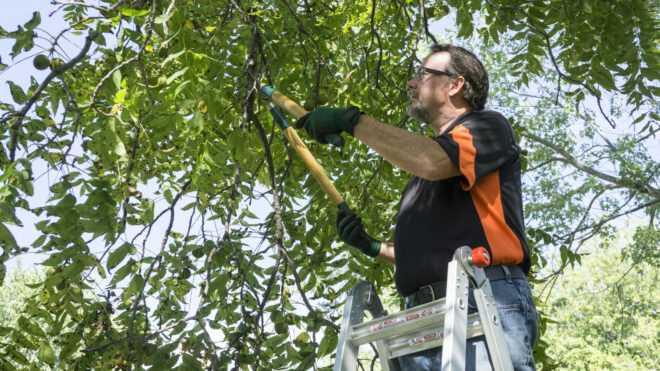Did you know that pruning has a number of positive effects on a tree? Not only does it stimulate growth, but it can prevent disease and insect infestation. But do you know how to prune correctly?
Done wrong, pruning can be disastrous for a tree. Read on as we discuss the main tree trimming mistakes and how to avoid them.
Bad Cuts
Just like a human, open cuts on a tree are prone to disease. Some do also not facilitate good regrowth. You need to research how to trim trees properly and use the correct tree cuts before starting out.
Don’t leave branch stubs as it means the tree can not seal off and prevent disease. Make sure you don’t remove the branch collar as the tree will not be able to seal over it.
Cutting During Growing Season
Pruning during the growing season is not a bad thing. However, over-pruning is. The risk is that you remove too many leaves, so the tree can not get the light it needs to keep itself alive.
This is important as summer is the time when a lack of water is most likely to occur. By removing shade, you will scold the plant while causing it to dry out quicker.
Using Old Tree Trimming Tools
Make sure you keep your tree trimming tools sharp and free from rust. Blunt instruments cause ragged, rough cuts. Ensure you sharpen your pruners and loppers before you start, and house them in a safe, water-tight place such as a shed or garage.
Topping a Tree
Topping a tree involves cutting the tree’s main truck at a point along its length. This removes the upper half of the tree, taking off a considerable amount of its height. It causes a myriad of problems.
As the tree no longer has the leaves it needs, it will sprout lots of small, weak branches in other areas. These cause clusters that do not look good. Eventually, these will grow into a spindly mess which will require even more corrective surgery down the line.
Pruning Large Branches
Removing branches that have diameters over three to four centimeters will not be healed by the tree. In addition to this, removing large branches is very dangerous if you do not know how and have the right safety equipment.
Lion Tailing
Lion tailing is when you remove a lot of leaves and foliage on the inner canopy of the tree but keep the outer canopy. This comes to resemble a lion’s tail, thin in the middle but bushy at one end. Not only does it remove the tree’s main method of capturing light, but it also compromises its structural integrity.
Tree Trimming Mistakes
Now you know these tree trimming mistakes, you can attempt pruning yourself. Make sure you check out the type of tree and best techniques for that species. Not all trees are the same.
If you still need a little help, then P ‘n’ D Logging should be your first stop. We have served the Greater Puget Sound area since 1977 and have built a reputation for excellence. Contact us here for a quote on your tree pruning services.

